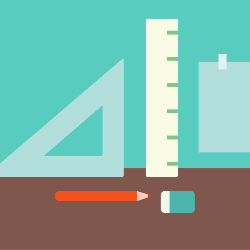There has been tremendous interest in designing stimuli (e.g. electrical currents) that produce desired neural responses, e.g., for inducing therapeutic effects for treatments. Traditionally, the design of such stimuli has been model-driven. Due to challenges inherent in modeling neural responses accurately, data-driven approaches offer an attractive alternative. The problem of data-driven stimulus design can be thought of as estimating an inverse of a non-linear ``forward" mapping, which takes in as inputs the stimulus parameters and outputs the corresponding neural responses. In most cases of interest, the forward mapping is many-to-one, and hence difficult to invert using traditional methods. Existing methods estimate the inverse by using conditional density estimation methods or numerically inverting an estimated forward mapping, but both approaches tend to perform poorly at small sample sizes. In this work, we develop a new optimization framework called PATHFINDER, which allows us to use regression methods for estimating an inverse mapping. We use toy examples to illustrate key aspects of PATHFINDER, and show, on computational models of biological neurons, that PATHFINDER can outperform existing methods at small sample sizes. The data-efficiency of PATHFINDER is especially valuable in stimulus design as collecting data is expensive in this domain.
翻译:对设计产生理想神经反应的刺激性(例如电流)的兴趣很大,这种刺激性(例如电流)产生了预期的神经反应,例如诱导治疗效果。传统上,这种刺激性的设计是模型驱动的。由于精确的神经反应模型所固有的挑战,数据驱动的方法提供了一种有吸引力的替代办法。数据驱动的刺激性设计问题可以被认为是对非线性“前向”绘图的反向估计,它吸收了刺激参数和相应的神经反应作为投入。在大多数感兴趣的情况下,前方绘图是多对一的,因此难以使用传统方法进行反向。现有方法通过使用有条件的密度估计方法或数字反向估计前方绘图方法来估计反向,但两种方法都倾向于在小的样本大小上表现不佳。在这项工作中,我们开发了一个新的优化框架,称为“PATHFINDER”, 使我们能够使用回归方法来估计反向的绘图。我们用许多例子来说明PATHFINDER的关键方面,因此很难用传统方法进行反向反向反向反向。在生物神经神经的计算模型中显示,尤其是PAFINDERA的模型中,这是在生物-DERDERA中的小数据中收集的模型。


